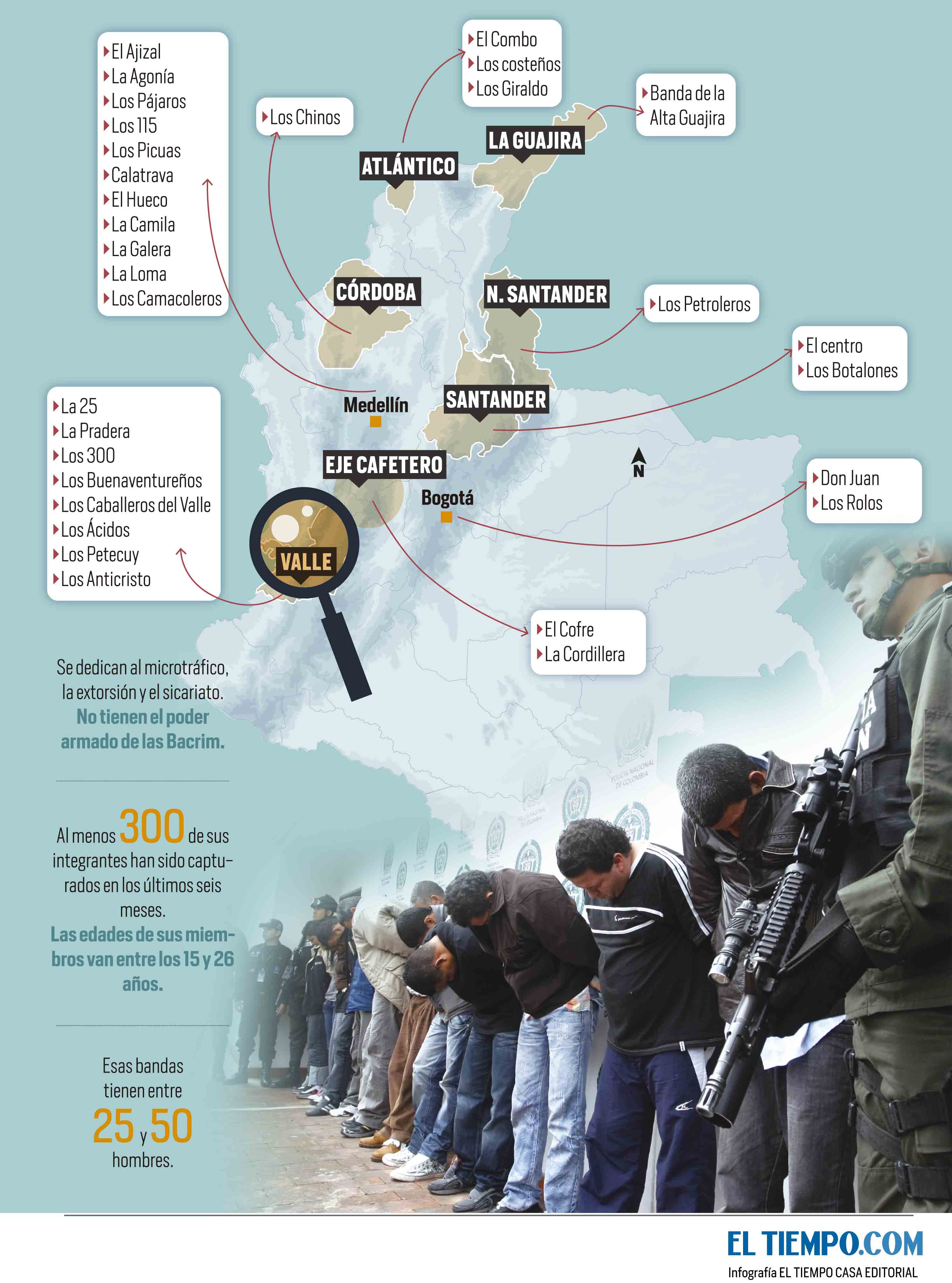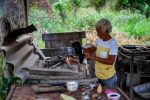
Prosecutors in Colombia have identified close to 100 criminal organizations that run operations on a local level and offer services to national paramilitary successor groups, in an indication of the increasingly fragmented nature of Colombian organized crime.
These organizations typically have between 25 and 30 members and control criminal activities such as extortion, micro-trafficking and contract killing, reported El Tiempo. They also provide services to the larger criminal organizations labeled by the government the BACRIM (from the Spanish abbreviation of “criminal bands”).
The gangs have displayed high levels of durability and an ability to recover quickly from blows against their organizations, say authorities. Several of the groups have been hit hard by arrests and security forces operations but have quickly reappeared in the same area, using the same or a similar name in order to continue capitalizing on their fearsome reputations.
SEE ALSO: Colombia News and Profiles
The groups are particularly prevalent along the Caribbean coast, in the north east of the country near the border with Venezuela, in the coffee district in the center of the country and in the departments of Valle del Cauca and Antioquia. (See El Tiempo’s graphic below.)
InSight Crime Analysis
The demobilization of the paramilitary United Self-Defense Forces of Colombia (AUC), which concluded in 2006, gave rise to a new era in Colombian organized crime — that of the BACRIM.
The evolution of the BACRIM can be traced through several stages, beginning with proliferation as factions of the old United Self-Defense Forces of Colombia (AUC) formed neo-paramilitary groups around the country. This was followed by consolidation as the more powerful of these new organizations expanded by co-opting or destroying rivals, and then by the emergence of two dominant groups, the Rastrojos and the Urabeños.
SEE ALSO: Urabeños News and Profiles
However, the structures of the BACRIM are significantly different to those of their paramilitary predecessors. Even the Rastrojos and the Urabeños have relied on smaller organizations, such as those identified by prosecutors, to carry out local operations as semi-independent members of a “criminal franchise.”
Some of the groups highlighted by predecessors, for example La Cordillera, share the BACRIM’s origins but did not expand territorially to the same extent, and often operate in partnership with more powerful groups.
Others, especially the urban organizations identified in Medellin and Cali, are so-called “collection offices” (ofincias de cobro) — medium scale criminal organizations linked to drug trafficking — or the larger of the gangs known as “combos,” both of which also provide services for the BACRIM.
However, while many of these groups operate in tandem with BACRIM, it is the smaller organizations that are proliferating as most of the BACRIM fragment.
The Rastrojos have imploded spectacularly, leaving local factions and partners to fend for themselves, while other BACRIM such as the Popular Revolutionary Anti-Terrorist Army of Colombia (ERPAC) have divided into smaller groups after significant infighting.
The only BACRIM organization left with a genuine national presence is now the Urabeños, which continue to expand using the “franchise” model. However, the prosecutors’ list includes organizations, such as Los Giraldos, that have violently rebelled against the Urabeños and struck out on their own, suggesting they may yet face a challenge in keeping these groups under their command.

- Colombia
- Bacrim











